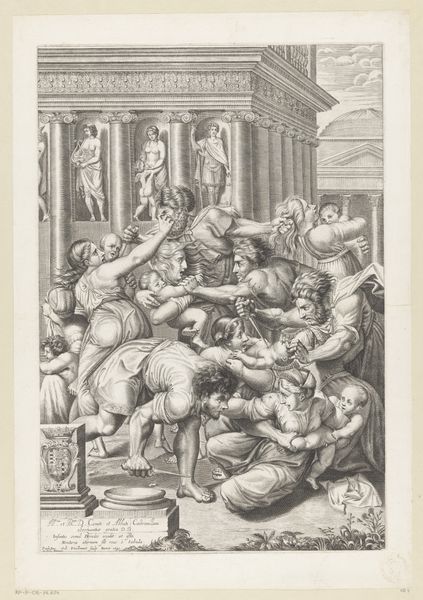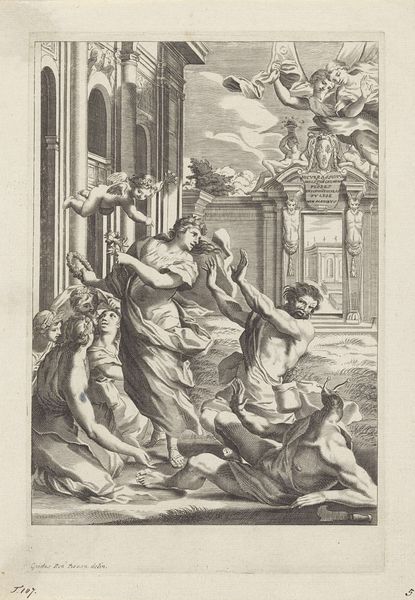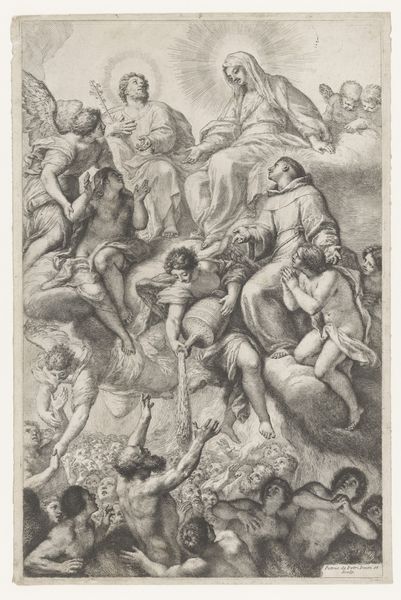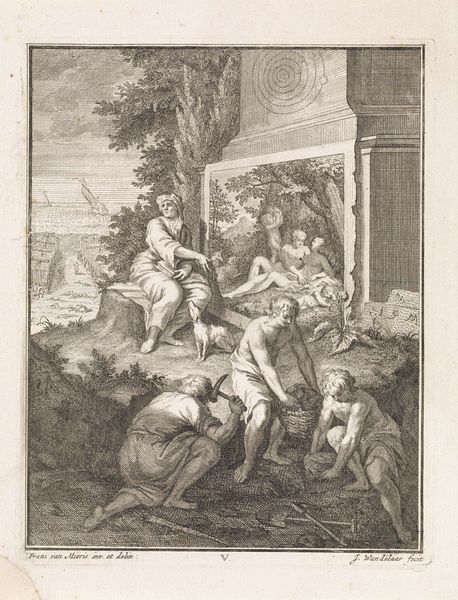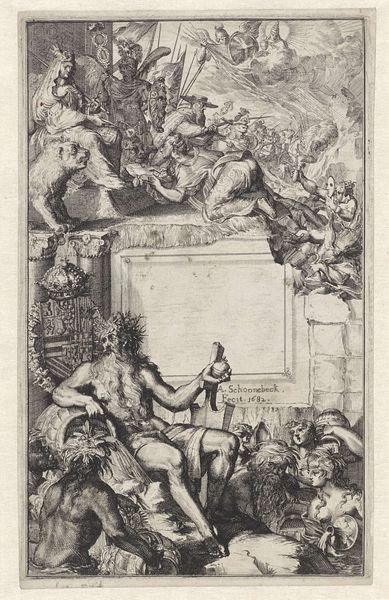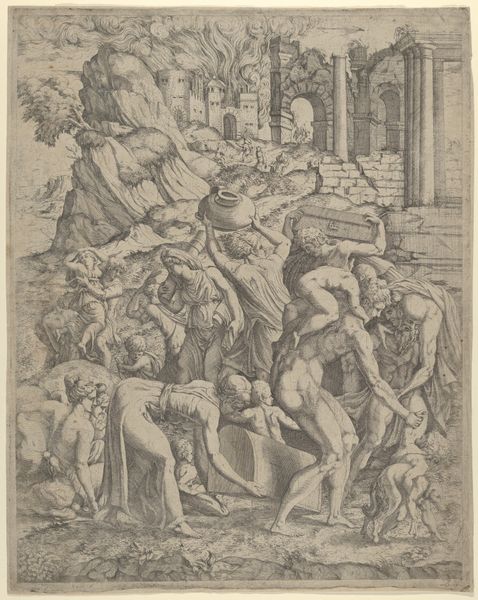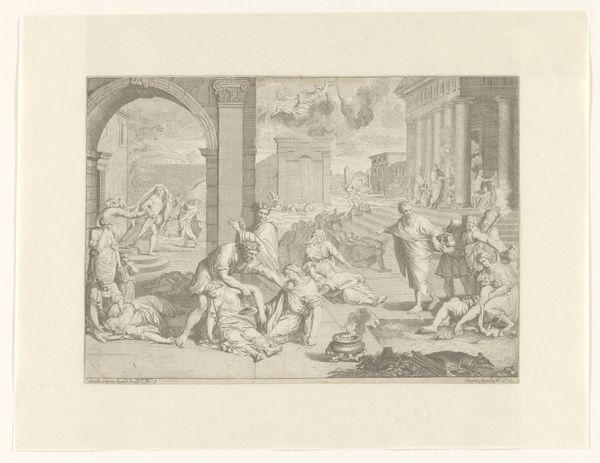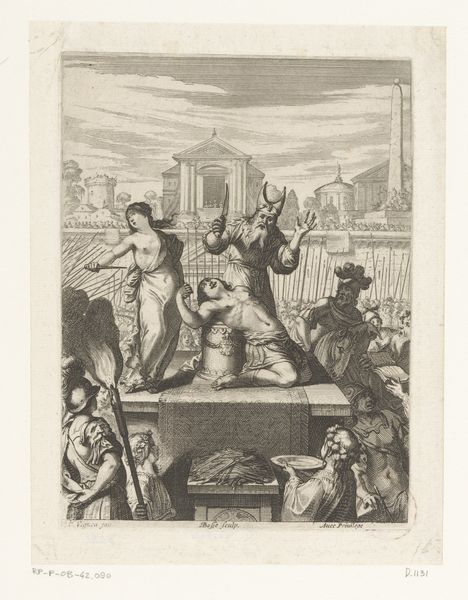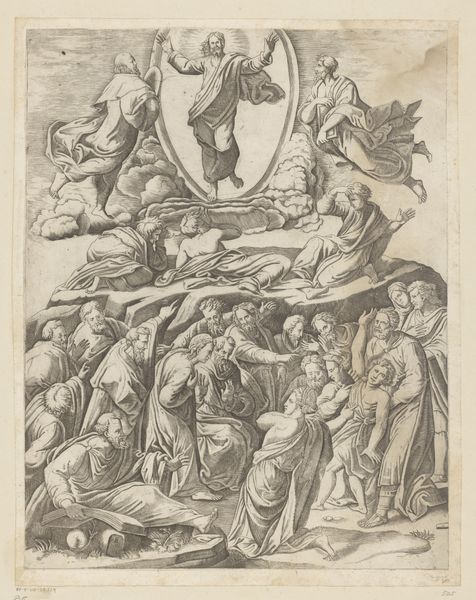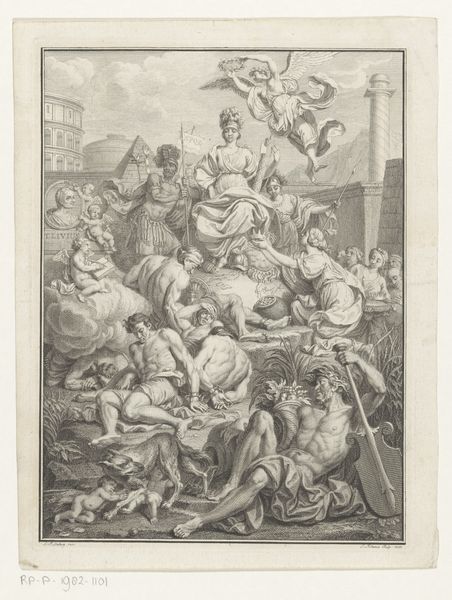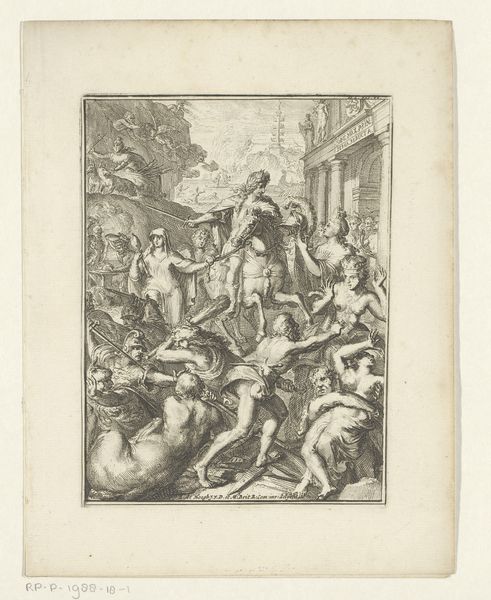
drawing, ink, engraving
#
drawing
#
narrative-art
#
baroque
#
pen illustration
#
pen sketch
#
figuration
#
ink
#
pen work
#
history-painting
#
engraving
Dimensions: height 194 mm, width 133 mm
Copyright: Rijks Museum: Open Domain
Editor: Here we have "Foltering: blootstelling aan honden en wilde dieren" – or Torture: Exposure to Dogs and Wild Animals – an engraving by Antonio Tempesta, dating sometime between 1565 and 1630. It's quite intense. All these figures in such distress. How do you even begin to interpret something like this? Curator: Well, darling, you dive right in! The scene is, admittedly, brutal. But consider this: it's Baroque! Think dramatic narratives, high emotion. Tempesta’s playing with contrasts - the architectural precision against the chaotic violence. And that exquisite detail, that line work... Doesn't it almost soften the horror, like a well-told, terrible fairytale? What do you make of the architectural backdrop – this imposing arena-like structure? Editor: I noticed it, it seems so detached, doesn't fit with the torture going on. Almost like this violence is staged, put on for show in a controlled environment? Curator: Exactly! You’re catching the theatrical spirit. It's like Tempesta's questioning the nature of power, the spectatorship of cruelty. Is he condemning it or just documenting a facet of his era? Is this spectacle, morality, or some potent mix? Editor: I hadn’t thought of it as commentary, but you're right, it complicates things. It's making me think about the entertainment of violence, and how desensitized society must have been to these horrors. Curator: See, you're now wrestling with it. It’s unsettling, yes, but deeply provocative. These artists didn’t just show us pretty landscapes. They dared us to look at the difficult bits of being human. It's why we’re still talking about it. Editor: I definitely see that. Thanks! Now, I need a bit to process all of that... Curator: Absolutely, my dear. Let’s move on – plenty more beauty and darkness to uncover.
Comments
No comments
Be the first to comment and join the conversation on the ultimate creative platform.
